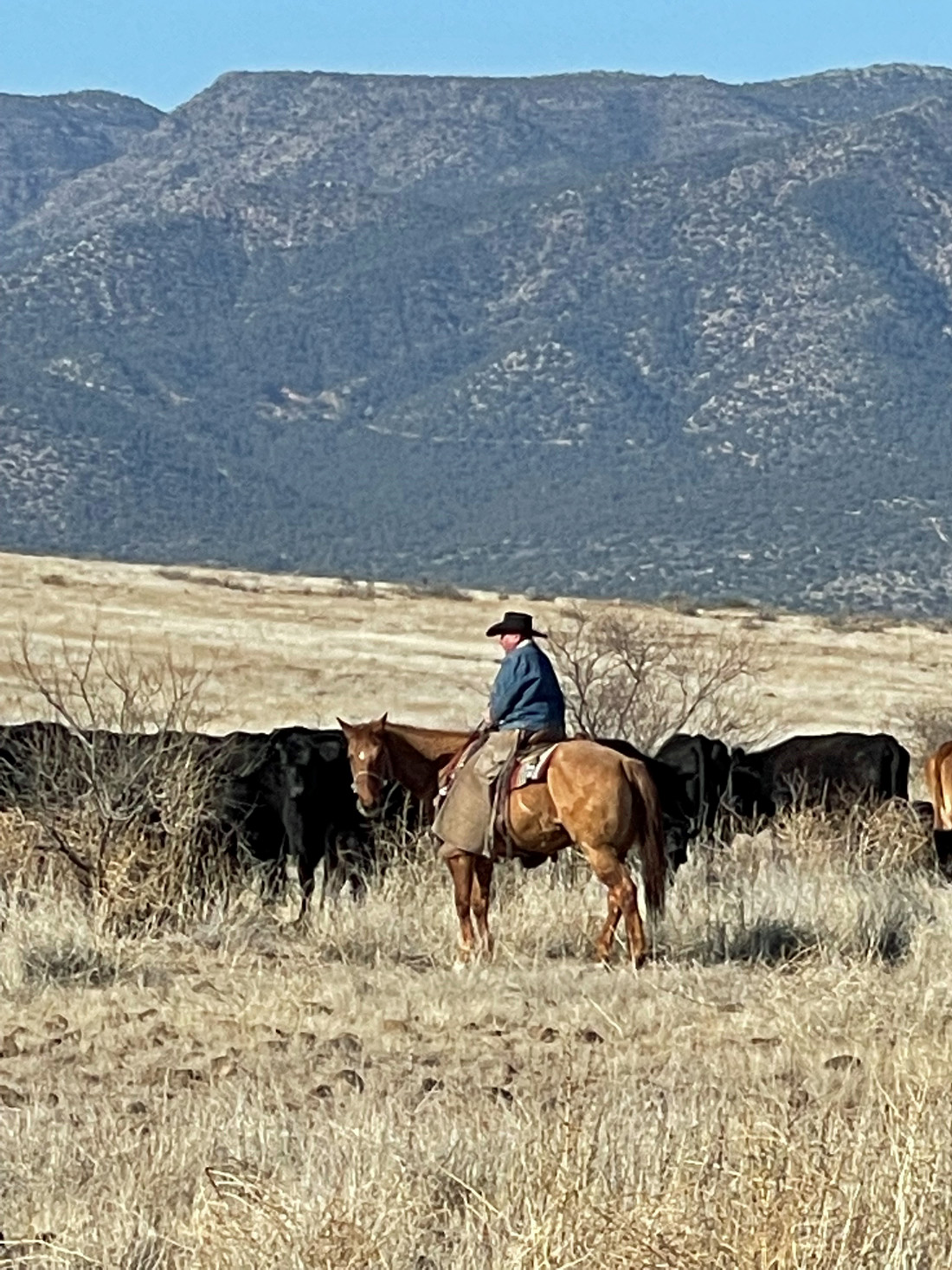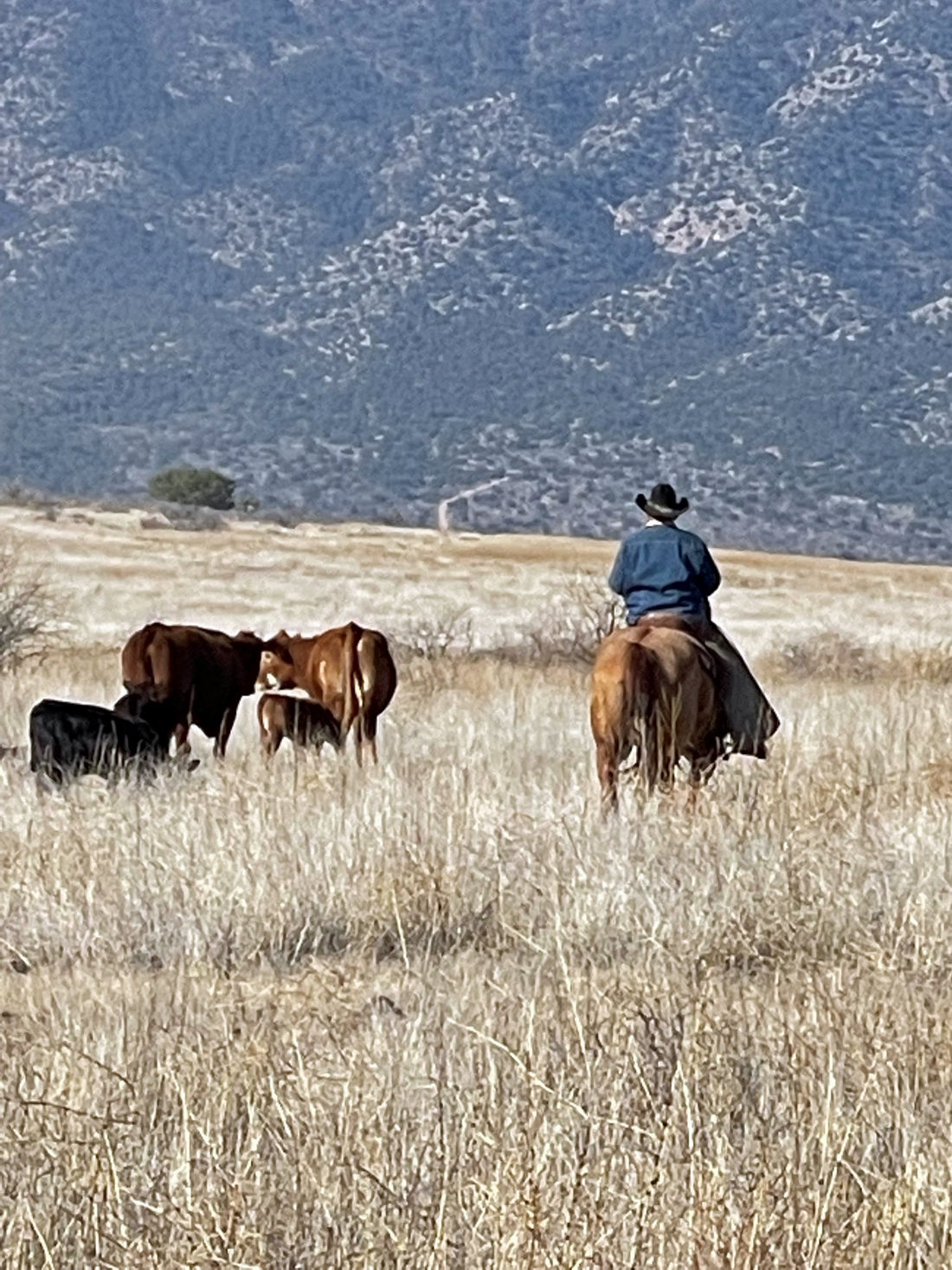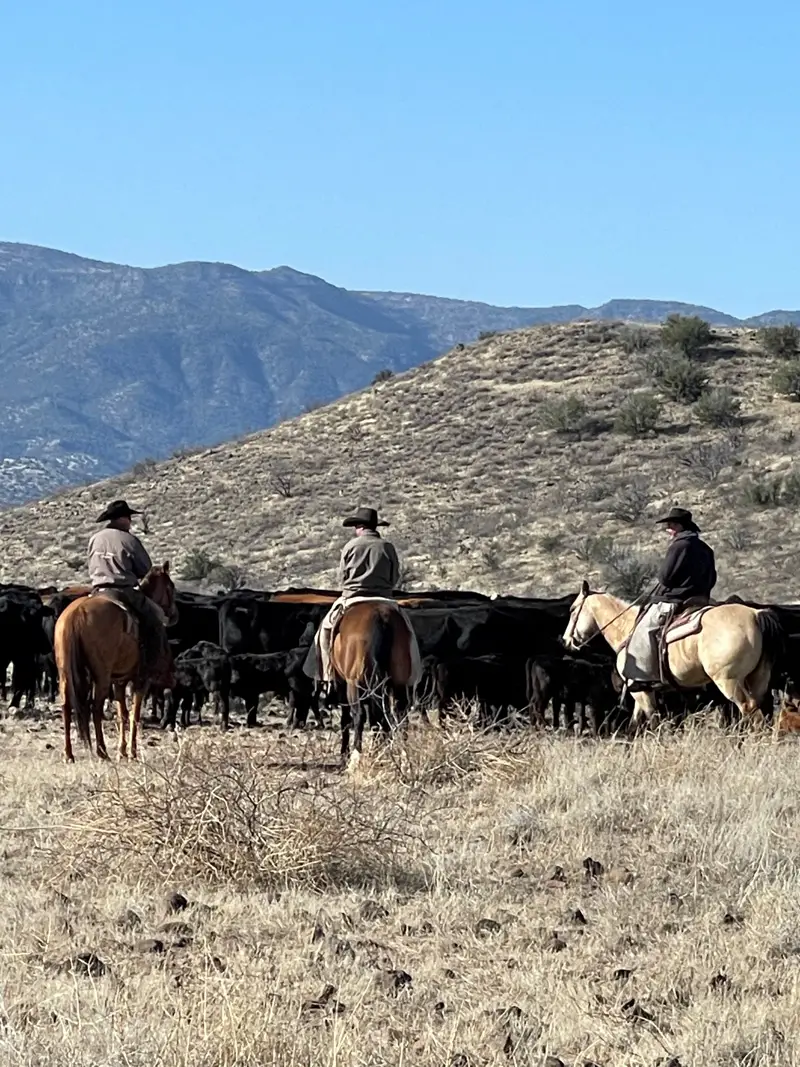
Arizona Ranching History is a fascinating journey that spans centuries, from the arrival of Spanish explorers to modern-day challenges ranchers face. As we delve into this rich heritage, you’ll discover how cattle ranching has shaped Arizona’s history and continues to influence its present.
In this blog post, we will explore the early beginnings of ranching in Arizona with the introduction of cattle by Francisco Vasquez de Coronado and the role played by missionary Francisco Eusebio Kino. We’ll then discuss the golden age of Spanish colonist ranching and conflicts with Native American tribes.
Moving forward, we’ll examine post-Civil War expansion into Northern Arizona due to Texas cattlemen’s influence and trade route changes brought about by the second transcontinental railroad line.
We will analyze overgrazing issues, significant drought effects on Arizona’s cattle industry, and environmental consequences.
Finally, our exploration of Arizona Ranching History will examine modern-day challenges such as water scarcity concerns, sustainable grazing practices adoption, and insurance providers’ roles in supporting contemporary ranching endeavors.
We will also highlight efforts made through Cowboy Lifestyle Network to preserve a Western way of life for future generations.
Table of Contents:
- Early Beginnings of Ranching in Arizona
- Arrival of Spanish Explorers and Missionaries
- Introduction of Cattle by Francisco Vasquez de Coronado
- Role of Missionary Francisco Eusebio Kino
- The Golden Age of Spanish Colonist Ranching
- Post-Civil War Expansion into Northern Arizona
- Overgrazing Issues & Great Drought Effects on Ranching Industry
- Modern-Day Challenges & Innovations Facing AZ Ranchers
- Preserving the Western Way of Life through Cowboy Lifestyle Network
- Frequently Asked Questions Arizona Ranching History
- Conclusion
Early Beginnings of Ranching in Arizona
Cattle ranching in Arizona has a rich history that can be traced back to Mexico around 1540. Spanish explorers and missionaries, such as Francisco Vasquez de Coronado, brought cattle to the area in 1540, setting a precedent for Arizona’s ranching culture.
This early period laid the foundation for future ranching endeavors and helped shape the unique lifestyle found in Prescott today.
Arrival of Spanish Explorers and Missionaries
The first Europeans to arrive in what is now known as Arizona were Spanish explorers searching for new lands and resources.
The settlers introduced various animals, such as cows, which later proved to be a significant factor in the area’s financial success. As more settlers arrived over time, they began establishing missions throughout the region to spread Christianity among Native American tribes.
Introduction of Cattle by Francisco Vasquez de Coronado
In his quest for wealth and conquest, Francisco Vasquez de Coronado inadvertently became one of the founding fathers of Arizona’s cattle industry when he introduced European breeds into North America during his expedition through Mexico. The animals quickly adjusted to the unfamiliar surroundings and prospered in their new habitat.

Role of Missionary Francisco Eusebio Kino
- Distribution: Missionary Francisco Eusebio Kino was another critical figure contributing significantly to shaping Arizona’s ranching landscape Francisco Eusebio Kino. He distributed cattle among Indian tribes living across vast stretches within the Sonora desert as gifts from Spain.
- Breeding: The tribes soon began breeding these cattle in large numbers, which led to a rapid increase in their population. This growth marked the beginning of Arizona’s ranching industry and played an essential role in shaping its future.
- Cultural Exchange: Kino’s efforts helped establish a thriving cattle industry and facilitated cultural exchange between Spanish settlers and Native American tribes. As more individuals understood the advantages of raising livestock, they began to adopt new approaches and customs that have since become integral elements of Arizona’s ranching culture.
The early beginnings of ranching in Arizona can be attributed to influential figures like Francisco Vasquez de Coronado and Francisco Eusebio Kino, who introduced European breeds into North America. Their actions laid the groundwork for what continues to attract business owners, residents, and tourists to Arizona.
In the late 1700s, Spanish voyagers and missionaries brought cattle to Arizona, setting in motion an essential chapter of the state’s history involving ranching. As a result, during the late 18th century, there was significant growth in ranches as conflicts arose between settlers and Native American tribes.
The Golden Age of Spanish Colonist Ranching
Between the late 1700s and early 1800s, Arizona experienced a flourishing era for cattle ranching due to Spanish colonists’ expansions of their livestock operations across the area.
This period marked significant growth in population and economic prosperity, thanks to thriving ranches that capitalized on the abundant grasslands at the time. Nevertheless, this period of prosperity was not without its difficulties.
Growth during the late 18th century
As more settlers arrived in Arizona from Spain and Mexico, they brought with them knowledge of advanced agricultural practices, allowing them to establish successful cattle ranches across vast expanses of land.
These new arrivals quickly adapted to local conditions by breeding hardy cattle capable of surviving harsh desert environments while producing valuable meat and hides for trade within regional markets.
- Ranches grew in size due to increased demand for beef products.
- New breeds adapted well to local climate conditions.
- Cattle drives became an essential part of transporting goods between settlements.

Conflicts with Native American tribes
Despite these successes, tensions mounted between Spanish colonists and native tribes who had long inhabited Arizona’s lands. As more settlers moved into traditional tribal territories seeking fertile grazing grounds for their herds, conflicts over resources intensified, leading to skirmishes that disrupted daily life on many frontier ranches.
The Apache Wars, a series of armed conflicts between various Apache groups and European-American settlers between 1849 and 1886, significantly impacted the cattle ranching industry. These hostilities made it difficult for ranchers to maintain their herds and protect their property from raids by native tribes.
As a result of these challenges, many Spanish colonists were forced to abandon or scale back their cattle operations during this period.
Despite the struggles, those who held out would eventually become a foundation for later generations of ranchers in Arizona to keep up their long-standing tradition of raising livestock in this renowned landscape.
The Golden Age of Spanish Colonist Ranching saw the growth and development of cattle ranching in Northern Arizona.
Still, with the arrival of Texas cattlemen after the Civil War, a new era began for Prescott’s ranching history. Post-Civil War Expansion into Northern Arizona brought an influx of Texan influence to this region and increased trade opportunities thanks to the second transcontinental railroad line.
Post-Civil War Expansion into Northern Arizona
After the Civil War, northern Arizona experienced significant growth in cattle ranching as Texas cattlemen changed their routes due to new railroad lines opening up.
This period marked another important milestone for expanding livestock operations across state borders, further solidifying Arizona’s place in ranching history.
Influence from Texas Cattlemen
The end of the Civil War brought about a shift in cattle trade routes, with many Texas cattlemen seeking new opportunities for their herds.
The open rangelands of northern Arizona proved to be an attractive option, leading to a surge of cattle being driven through the region.
As these seasoned ranchers settled in Arizona, they brought valuable knowledge and experience that helped shape the local industry.

Second Transcontinental Railroad Line’s Impact on Trade Routes
Completing the second transcontinental railroad line, connecting San Francisco to New Orleans via Tucson and El Paso, opened up new transport possibilities between states.
With more accessible access to east and west markets, this development greatly influenced how cattle were moved throughout the country.
As a result, more attention was given to improving infrastructure within Arizona Territory itself – including building stockyards and other facilities necessary for supporting large-scale livestock operations.
- Railroads: The introduction of railroads allowed ranchers to transport their herds over long distances quickly and efficiently.
- New Markets: Accessible transportation options led to increased demand for beef products from growing urban centers around America during this time.
- Infrastructure Development: Supporting facilities like stockyards and feedlots encouraged further investment in Arizona’s ranching industry.
Northern Arizona experienced a period of growth in cattle ranching, which had lasting impacts on the region’s economy and culture.
With new trade routes established and experienced Texas cattlemen bringing their expertise to the area, it was an exciting time for those involved in the livestock business.
As we continue to explore Prescott’s unique lifestyle through its rich history, understanding these pivotal moments helps us appreciate how far our community has come.
The post-Civil War expansion into Northern Arizona brought a new influx of cattlemen from Texas, significantly impacting the trade routes with the second transcontinental railroad line.
However, overgrazing and the Great Drought had severe consequences for local ranching operations that could not be ignored.
Overgrazing Issues & Great Drought Effects on Ranching Industry
The great drought of the 1890s had a significant impact on Arizona Territory’s rangeland, which could no longer support its vast grasslands. This led to changes in the cattle industry as overgrazing became a pressing issue affecting land management practices and overall production levels.
Environmental Consequences from Overgrazing
Overgrazing became increasingly prevalent as ranchers struggled to maintain their herds during this period.
The excessive grazing by livestock caused severe damage to native plants and soil structures, leading to erosion and loss of biodiversity.
It was obvious that innovative methods were essential for safeguarding rangelands to keep them intact for future generations.
Impact on Local Economy Due To Decreased Production
In addition to the environmental consequences of overgrazing, there were also economic repercussions felt throughout Arizona Territory at this time.
With fewer healthy grasslands available for grazing cattle, many ranchers experienced decreased production rates and financial losses. Some even went out of business entirely due to these challenges.
To combat these issues and ensure long-term sustainability within the industry, several measures have been taken since then:
- Rancher Education: Many organizations now offer workshops and resources to educate ranchers about sustainable grazing practices (e.g., University of Arizona Cooperative Extension Service). These programs help promote responsible land stewardship among those involved in livestock operations.
- Public Land Management: Federal and state agencies, such as the Bureau of Land Management, have implemented policies to regulate grazing on public lands. This includes issuing permits based on carrying capacity assessments and enforcing strict guidelines for managing rangeland resources.
- Rancher Collaboration: Ranchers are increasingly working together through initiatives like the Quivira Coalition, which fosters stakeholder collaboration to promote regenerative land management practices that benefit both ranching operations and ecosystems.
The lessons learned from this challenging period in Arizona’s ranching history continue to inform modern-day efforts to preserve our precious rangelands while supporting a thriving cattle industry, even as the current administration in the U.S. Government is doing all it can to destroy cattle ranching.
The 19th century’s Great Drought considerably affected Arizona ranching, leading to overgrazing issues that still linger today.
Despite the difficulties posed by the 19th-century drought, today’s ranchers are finding ways to adjust and remain profitable despite shifting conditions.
Modern-Day Challenges & Innovations Facing AZ Ranchers
Today, AZ ranchers are challenged by water shortages. However, they have adapted by incorporating innovative practices like sustainable grazing methods and risk-assessment tools provided by companies like CKP Insurance to ensure the longevity of their businesses.
Climate Change Effects on Rangelands
Rising temperatures and more frequent droughts due to climate change make it difficult for Arizona’s rangelands and livestock, necessitating ranchers to adapt their management strategies.
As a result, ranchers must adapt their management strategies to accommodate these changes while maintaining productivity levels.
For example, some ranchers have turned to rotational grazing systems, which allow for better utilization of available resources while promoting regrowth in overgrazed areas.
Water Scarcity Concerns
In addition to climate change impacts, water scarcity is another significant challenge facing Arizona’s cattle industry today.
With limited access to reliable water sources due in part to ongoing drought conditions throughout the state, many ranches struggle to provide adequate hydration for livestock and vegetation growth.
To combat this issue, several initiatives have been implemented statewide that focus on water conservation efforts, including rainwater harvesting systems designed specifically for agricultural use.

Sustainable Grazing Practices Adoption
- Holistic Management: A decision-making framework that encourages landowners to consider environmental factors when deciding resource allocation or land-use planning (Holistic Management International).
- Managed Intensive Rotational Grazing (MIRG): A grazing system that involves rotating livestock through small paddocks, allowing for more efficient use of available forage and promoting grassland recovery (Sustainable Agriculture Research & Education).
- Riparian Area Management: Protect and restore riparian areas along waterways to improve water quality, reduce erosion, and provide wildlife habitat (University of Arizona Cooperative Extension).
Role of Insurance Providers in Supporting Modern-Day Ranching
In the face of these challenges, insurance providers like CKP Insurance play a crucial role in supporting modern-day ranchers.
By offering tailored policies that address specific risks associated with cattle operations – such as drought or disease outbreaks – they help ensure the financial stability necessary for continued success within this industry.
Additionally, companies like CKP Insurance utilize advanced risk-assessment tools to understand each client’s unique needs better while providing guidance on best practices for mitigating potential losses.
Despite difficulties encountered by ranchers nowadays, many have taken up creative approaches to guarantee their farms stay viable.
With this in mind, it is important to recognize and promote the Western way of life through Cowboy Lifestyle Network to preserve Arizona’s ranching heritage.
Preserving the Western Way of Life through Cowboy Lifestyle Network
The Cowboy Lifestyle Network is dedicated to preserving the Western way of life, with Krysta Paffrath at its helm as Editor in Chief.
By sharing stories about Arizona’s rich history in cattle ranching, this platform aims to educate readers on how traditions are being maintained while adapting to present-day realities.
Importance of Storytelling for Cultural Preservation
Storytelling is crucial in keeping cultural heritage alive and fostering an appreciation for our roots. The Cowboy Lifestyle Network provides a platform for the community to share stories that capture the spirit of rodeo, country music, and ranching.
Through these narratives, readers can understand how modern-day cowboys and cowgirls continue upholding time-honored customs while embracing innovation.
Promoting Awareness about Contemporary Issues Facing Arizona’s Ranching Industry
Beyond celebrating tradition, it is essential to acknowledge the contemporary challenges today’s Arizona ranchers face. Addressing these matters effectively requires raising awareness among local communities and broader audiences.
- Sustainable grazing practices: Many Arizona ranchers are tackling environmental obstacles by adopting sustainable grazing methods such as rotational grazing systems or holistic management approaches. These techniques help promote healthier ecosystems while ensuring optimal livestock production levels.
- Risk-assessment tools: Companies like CKP Insurance provide valuable support services for modern-day ranchers seeking innovative solutions tailored to their needs. By offering risk-assessment tools and personalized insurance options, CKP Insurance helps ranchers navigate the complexities of today’s ever-changing landscape.
- Collaborative efforts: Lastly, forging partnerships with organizations such as the Arizona Cattle Growers’ Association or local conservation groups can lead to more effective resource management strategies that benefit ranching operations and surrounding environments.
In sharing these stories and promoting awareness about contemporary issues facing Arizona’s ranching industry, Cowboy Lifestyle Network plays a vital role in preserving this critical aspect of our cultural heritage for future generations to cherish.

Frequently Asked Questions Arizona Ranching History
Who started cattle ranching in Arizona?
Cattle ranching in Arizona began with the arrival of Spanish explorers and missionaries in the 16th century. Francisco Vazquez de Coronado introduced cattle to the region, while missionary Francisco Eusebio Kino played a significant role in establishing ranches during the late 17th and early 18th centuries.
What is the history of cattle in Arizona?
The history of cattle in Arizona dates back to the 16th century when Spanish explorer Francisco Vazquez de Coronado brought them into the region. The industry expanded during Spanish colonization, faced challenges from Native American conflicts, overgrazing issues, and droughts, and evolved through modern-day innovations for sustainable practices.
What is the history of ranching?
Ranching has its roots in Spain before spreading to Mexico and North America due to European exploration. In Arizona, it began with Spanish colonists introducing livestock during their expeditions. Over time, influences from Texas cattlemen shaped local practices and environmental factors like droughts impacting operations throughout history.
What were the early ranches in Arizona?
The earliest known ranches were established by Jesuit missionary Father Eusebio Kino near present-day Tucson around 1699-1700. These missions included extensive grazing lands for raising livestock, such as horses and cows, which laid foundations for future development within Northern Mexican provinces that would later become part of modern-day southern Arizona.
Conclusion
Arizona Ranching History is rich and diverse, with roots dating back to the arrival of Spanish explorers and missionaries. Ranchers have encountered various issues, including struggles with indigenous tribes, too much grazing, and dry spells. However, modern-day ranchers are adopting sustainable practices to preserve this Western way of life.
If you want to learn more about Arizona’s ranching history or support local businesses in the industry, check out Cowboy Lifestyle Network. They promote awareness about contemporary issues facing Arizona’s ranching industry while preserving its cultural heritage through storytelling.



Leave a Comment
You must be logged in to post a comment.